History of Kursk
11th Century
First Mention
Although archaeological evidence suggests that there was a large settlement in the location of Kursk before the 8th Century, Kursk was first mentioned in 1032 in the Hagiography of St Theodosius (Feodosi) of the Kiev-Caves, who grew up in Kursk which was by then already a large, developed and important city. In approximately 1095 Izyaslav Vladimirovich, a son of Vladimir Monomakh, became the first prince of Kursk although he only ruled there for a year as shortly afterwards he was elevated to prince of Murom. However Prince Izyalslav had enough time to build a fortress in Kursk, making the settlement one of the strongest on the borders of Kievan Rus.
12th Century
Princes of Kursk
As only a minor principality, the Kursk Principality did not always have its own prince and never had its own dynasty of Ryurikid princes. The principality often passed between the various factions of Ryurikid princes during this period of time when internecine wars were common. In 1127 Vsevolod Olgovich took Chernigov from his uncle. To stop Mstislav the Great interfering in this conflict Vsevolod gave him Kursk and the surrounding lands. In turn Mstislav the Great made his son Izyaslav prince of Kursk. Izyaslav Mstislavich ruled as prince of Kursk until 1130 when he became prince of Polotsk. The Olgovichy princes were able to regain Kursk in 1136: Gleb Olgovich ruled Kursk up to his death in the city in 1138 and was followed by his younger brother Svyatoslav Olgovich who ruled in Kursk until 1139 when he returned to be prince of Novgorod. In 1146 Svyatoslav Olgovich became prince of Novgorod-Seversky, which included Kursk. Svyatoslav gave Kursk to Ivan Yurievich, son of his ally Yuri Dolgoruky. Ivan Yurievich died in 1147 and Svyatoslav gave the principality to Ivan's younger brother Gleb who ruled in Kursk until 1148.
Tale of Prince Igor's Campaign
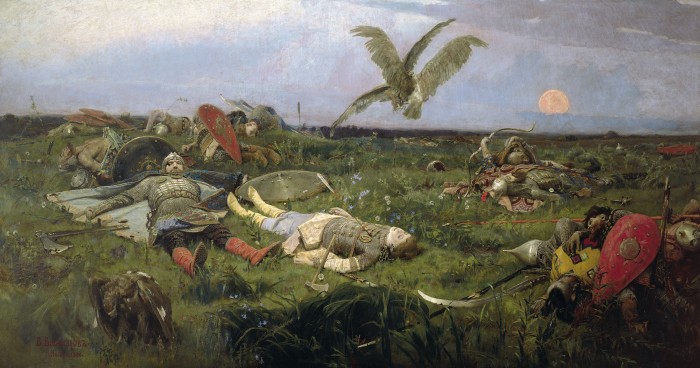
In 1161 Kursk once again had its own prince - Oleg Svyatoslavich, son of Svyatoslav Olgovich. Oleg ruled in Kursk until 1164 when he became prince of Novgorod-Seversky. Oleg's brother Vsevolod succeeded him in Kursk. Vsevolod Svyatoslavich was known as Vsevolod Bui-Tur, meaning something along the lines of Mighty Bull. As his sobriquet suggests he was known for his bravery in dealing with the Cumans (Polovtsians). In 1185 Prince Igor of Novgorod-Seversky led an unsuccessful campaign against the Cumans which is the subject of the famous 12th-century Tale of Prince Igor's Campaign. Prince Vsevolod Bui-Tur accompanied his brother on the campaign and also features as one of the heroes in the tale. Vsevolod Bui-Tur remained prince of Kursk until his death in 1196.
13th Century
Mongol-Tatar Invasion of Rus
After Vsevolod Bui-Tur's death in 1196, it is unclear who became prince of Kiev. It is possible that he was succeeded by his nephew Prince Svyatoslav Olgovich of Rylsk. In 1223 a Prince Oleg of Kursk participated in the Battle of River Kalka against the Mongols, Prince Oleg was a descendent of Prince Oleg Svyatoslavich of Novgorod-Seversky, possibly the son of Prince Svyatoslav Olgovich of Rylsk. After Prince Oleg, information on the princes of Kursk is unclear. In any case the principality came to an end in 1238 when Kursk was destroyed during the Mongol-Tatar Invasion of Rus. Later Kursk was once again devastated by Mongol-Tatar forces in response to the citizens of Kursk rising up against the Mongol representative there.
14th and 15th Centuries
The Mongol-Tatar Invasion significantly weakened Russian territories and Grand Duke Algirdas of Lithuania took advantage of this situation. In the 1350s Algirdas managed to capture the Chernigov and Novgorod-Seversky lands, including Kursk, and incorporated them into the Grand Duchy of Lithuania. Kursk would remain part of Lithuania up until the beginning of the 16th century. In 1402 Kursk is mentioned as a Lithuanian city in an agreement between Lithuania and the Teutonic Order. Throughout the 15th century the city was raided by Crimean Tatars and the Nogais.
16th Century
Russian-Lithuanian Wars
The Russian-Lithuanian War of 1500-1503 was very successful for Russia which gained control of one-third of Lithuanian territory, including Kursk. After the Russian-Lithuanian War of 1507-1508 a peace treaty was signed between Russia and Lithuania under which Grand Duke Sigismund I the Old of Lithuania recognised the territory won by Grand Prince Ivan III of Rus during the 1500-1503 war as territory of Russia. In 1597 Tsar Fyodor I had a new fortress constructed in Kursk to protect it from Crimean Tatar raids.
17th Century
Znamensky Monastery

Kursk was one of the first cities to declare its support of the First False Dmitri in 1604. When Dmitri was in Kursk he demanded the Our Lady of the Kursk Root Icon be brought to him and later he took it with him to Moscow. In 1612 Polish interventionists began besieging the Kursk fortress. The defenders refused to surrender even though the situation looked hopeless. Legend has it they made an oath to build a monastery should the Virgin Mary protect them. Several weeks later the siege was lifted and the fortress did not fall. The defenders immediately began to fulfil their oath and built a wooden church dedicated to the Nativity of the Virgin Mary. In approximately 1615, Tsar Michael returned the Our Lady of the Kursk Root Icon to the nearby Korennaya Hermitage and in 1618 the icon was transferred to a newly established monastery in Kursk. It remained in Kursk thereafter only returning to the Korennaya Hermitage on annual religious processions. In 1649 on the orders of Tsar Michael a new stone cathedral was built especially to house the icon and from this point onwards the monastery became known as the Znamensky monastery.
18th Century
Administrative Reform

In 1708 Kursk became part of the Kiev Governorate and in 1727 part of the Belgorod Governorate. In 1779 it was elevated to the administrative centre of the Kursk Viceroyalty. A coat of arms was officially approved for the city in 1780 which depicts three partridges flying on a blue strip on a silver background. In 1781 there was a major fire in Kursk and subsequently a new general plan was adopted for the city. Kursk became the administrative centre of the in 1797.
19th Century
Our Lady of the Kursk Root Icon and Religious Processions
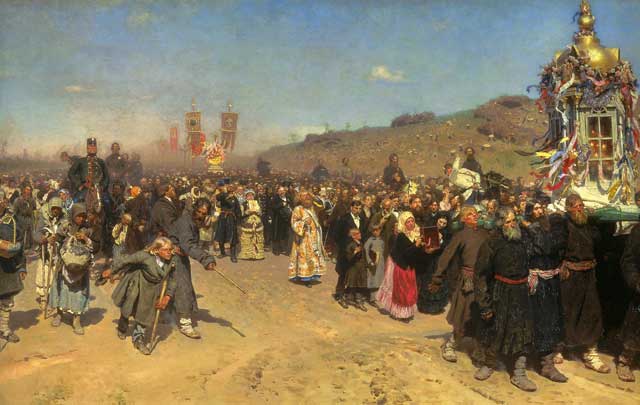
In the mid-19th century the religious procession with the Our Lady of the Kursk Root Icon from Kursk's Znamensky Monastery to the nearby Korennaya Hermitage became one of the biggest religious events in the empire and tens of thousands of people took part in it. In 1883 the artist Ilya Repin depicted this religious procession in his famous painting in which he shows the various social strata in Russia at the time. In 1898 an anarchist placed a bomb in the Our Lady of the Sign Cathedral of the Znamensky Monastery under the Our Lady of the Kursk Root Icon. The explosion caused great damage to the cathedral but when the priest found the silver case of the icon in the rubble, he discovered that the icon itself has miraculously survived.
20th Century
Revolution
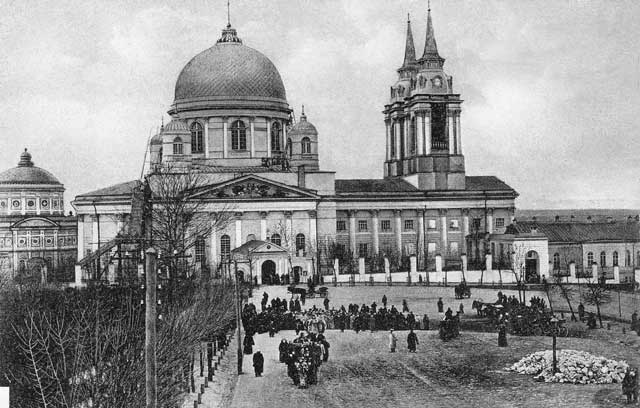
In 1917 Soviet power was declared in Kursk, but the volunteer army of General Anton Denikin briefly occupied the city from September to November 1919 when the Soviets retook the city. When Denikin's army left Kursk they took with them the Our Lady of the Kursk Root Icon, which was eventually taken to the USA where it remains today. In 1934 Kursk became the centre of the newly-established Kursk Region.
Second World War
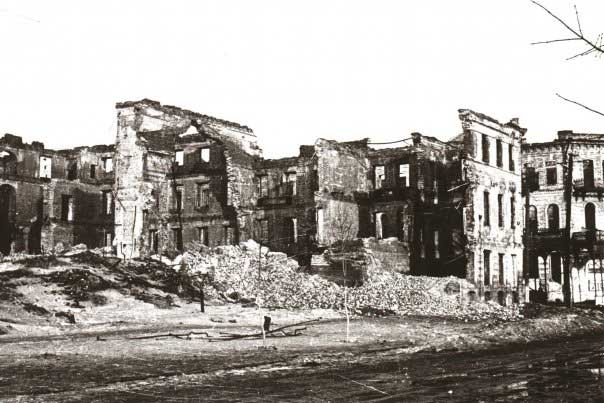
On 29 August 1941 Kursk experienced its first bombing raid by the Luftwaffe and on 1 November 1941 the city was attacked. Kursk fell two days later on 3 November 1941 and was only liberated on 8 February 1943 by the 60th army of the Voronezh Front. The liberation of Kursk resulted in what is known as the Kursk Salient - a Soviet-controlled bulge on the frontline around the city. It was obvious to the Soviets that soon Hitler would launch an attempt to recapture the city. Marshal Zhukhov was among those who argued that the Red Army should go on the defensive and only once the Nazis had been exhausted should they launch a counter-attack. This proved to be a successful tactic and at the Battle of the Kursk Salient, which was fought between 5 July to 23 August 1943, the Soviets were victorious, although at a very high cost. The Battle of Prokhorovka (often also called the Battle of Kursk) took place during the Battle of the Kursk Salient in Prokhorovka outside Belgorod and was the largest tank battle in history. After the Battle of the Kursk Salient, the Nazis remained on the defensive for the rest of the war.
21st Century
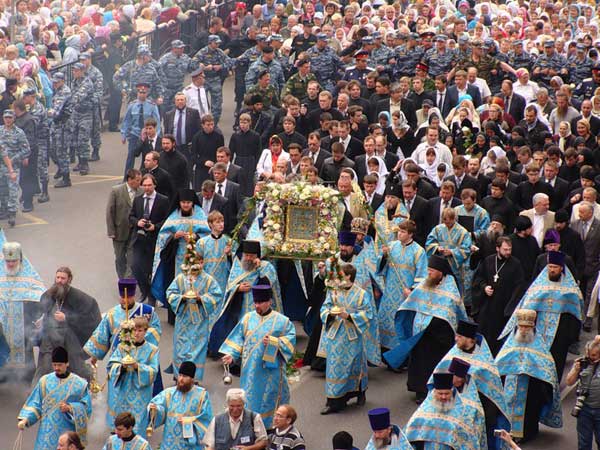
After the fall of the Soviet Union, many of Kursk's churches were once again reopened. This included the Znamensky Monastery and the new century saw the religious procession from the monastery to the Korennaya Hermitage being revived and gaining in popularity. In 2007 Kursk was awarded the title of City of Military Glory for the “courage, endurance and mass heroism, demostrated by defenders of the city in the struggle for the freedom and independence of the Motherland”.

 History
History